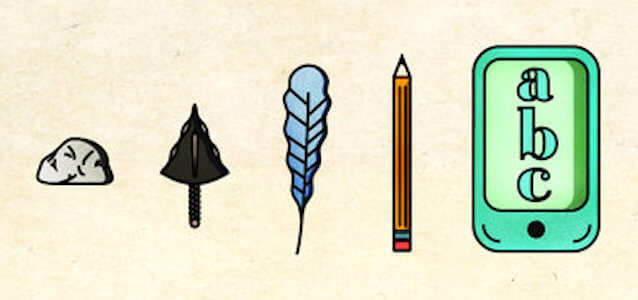Focus: Dealing with Digital Distraction

- By Anne Collier
- Misc
- December 17, 2013
Learning how to be present, attend to others, know what’s important in a given moment and stay focused on it has always been a vital part of growing up. “The ability to focus is a secret element to success that often gets ignored,” according to an article in Mind/Shift that cites the work of psychologist Daniel Goleman, an author of a book about this.
Because this piece about distraction leads with a reference to digital devices in the classroom, a quick uncritical read might lead to what has almost become a default conclusion: that digital devices in the classroom are a problem and barring them the solution. I say “default” because arguments for blocking or banning digital media as a source of safety and other desired outcomes for children are about as old as the public discussion about kids and digital media (almost 20 years old). Yet these media and technologies are here to stay, increasingly embedded in our personal and professional lives, so it would be helpful to our children to resist that default response and – speaking of focus – focus on helping them develop the literacies of effective media use.
What Is It That Distracts?
“If I had to stare at the textbook in that photo [at the top of the Mind/Shift article], I would also be distracted. Even without a device, I would be distracted by my own thoughts!” wrote Tim Clark, EdD, in an email. Because he helped his (Forsyth County, Ga.) school district develop and implement its mobile learning or BYOT (bring-your-own-technology), I asked him for his thoughts on the Mind/Shift piece.
“Even though distraction has been with us much longer than digital media have,” he wrote, “if we choose to believe digital media are causing it, then it’s only logical that we use digital media to learn how to focus in digital media.
“Distraction is a behavior,” he continued. “It’s not device or technology specific. How to manage possible distractions is an on-going, everyday lesson, and it could also be taught as media literacy/digital citizenship … within the context of using technology tools throughout the school day and curriculum.”
Engagement vs. Distraction
That’s exactly what New Jersey teacher Marianne Malmstrom has been doing for several years with students in grades 3 through 8 in the digital environment called Minecraft. Distraction, she wrote me after I asked for her thoughts on Mind/Shift article too, “will become more and more an issue as kids become less willing to conform to an outdated mode of education. I don’t think schools have to become like games to work, but I do think we have much to learn from games if we are going to redesign learning spaces that will be relevant to this generation [97% of which plays videogames] and those to follow.”
All kinds of learning, both academic and social, happens in Minecraft in her classroom at the Elisabeth Morrow School, but what she first started working on with her students in Minecraft and other digital environments was citizenship. She’s using these game environments as safe places for them to develop, practice and model social norms, self-regulation and a collective kind of “classroom management” that’s more about self-determination and consensus than a teacher’s control. This resonates with what Tim Clark is working on in Georgia.
Respect Affords Engagement
“When teachers have high expectations for how students are using their technology tools within a supportive learning community,” Clark wrote, “students want to use them responsibly. Students have had years of experience teaching themselves and each other how they should use technology, but often without the guidance of their teachers or parents. That is why I think students should have their technology devices at school so that they learn how to manage possible distractions within the context of the classroom.”
I doubt that, if Daniel Goleman had a chance to observe these educators working with their students in and with digital media, he’d disagree. According to Mind/Shift, daily “digital sabbaths” isn’t the only attention-teaching tool Goleman advocates for. “He’d also like to see schools building exercises that strengthen attention, like mindfulness practices, into the curriculum.” Certainly, getting social-emotional learning into the school day will help, but think of the power of getting it into digital-media environments in the school day, with the guidance of a teacher who respects students and their media interests demonstrates the importance of focus and mindfulness in any environment, whether physical or digital.
Originally posted via Net Family News
![]()
Content provided by Anne Collier. Editor of NetFamilyNews.org and founder and executive director of its parent organization, Net Family News, Inc. More on Anne Collier can be found here.
Related links
- “Digital citizenship, the ‘lived curriculum’: Part 1″ and Part 2, what that looks like
- Marianne Malmstrom’s series of guest posts: “Mining Minecraft, Part 1: Little gamers’ digital play through a teacher’s eyes,” Part 2 “Brilliance when students drive the learning” and Part 3 “Safety & citizenship in games (do try this at home!)“
- About how BYOT works in Tim Clark’s district: “All kinds of learning all at once with BYOT“
